
Reef Builder: Restoring Australia's lost shellfish reefs
Bringing the shellfish reefs back into Oyster Harbour
A Reef Builder project
Before the arrival of the Europeans, the Menang Noongar Traditonal Owners made use of Oyster Harbour, (known as Miaritch in the local dialect), for its rich marine resources. When English explorer George Vancouver became the first European to visit the area in 1791, he was so impressed by the abundance of Oysters growing here that he name it Oyster Harbour. Following over harvesting, poor water quality and disease meant the turn of this century oyster reefs of Oyster Harbour were no more.
The history of Oyster Harbour's reefs
The warming of the fresh salty air that has swept in from the Southern Ocean off the south coast of Western Australia for millennia, signalled the time of the year that Menang Noongar people returned to the coast.
Closer to the sea, they made use of its many marine resources after a winter inland, sheltering from the harsher weather and living off the land. In the bays near Albany, they made stone traps to catch fish as the tide went out, sutainably harvesting this abundant food source.
Oyster Harbour is in the traditional lands (boodiar) of the Menang Noongar people and is known as Miaritch, referring to the meeting place of the Warrecoolyup (King) and Kalganup (Kalgan) rivers, and also a meeting place of the Menang people. It is also known as the 'home of all the fishing traps' or mungas, with the land area adjacent to the traps known as Tamungup.
Oyster reefs fell into decline
Unfortunately, early European settlers found so many uses for the oysters, that by the late 1800's the remained associated with the harbour in name only. Oyster reefs were actively dredged from the depths of Oyster Harbour, firstly to supply oysters for consumption, followed by the use of the reefs themselves for a source of lime for the building of Albany.
The combined effects of the harvesting, poor water quality and disease meant the oyster reefs of Oyster Harbour became no more. With the loss of the reefs, came a further decline in natural values such as water quality and fish stocks.
Today, we have seagrass actively recovering in the shallower banks of the harbour, however much of Oyster Harbour is characterised by silty, nutrient rich bare substrate at depths below 4 metres.
This sadly familiar scenario has been repeated across southern Australia. Thankfully, it's not too late to do something about it.
The Oyster Harbour Restoration project
Since 2016, TNC has been restoring the lost shellfish reefs of Oyster Harbour so that once again, the local area, people and marine environment can benefit from all the services a thriving reef provides. This includes a boost to fish productivity, improved water quality and increased overall biodiversity in the harbour.
This project is a part of The Nature Conservancy’s national Reef Builder initiative to bring shellfish reef ecosystems back from the brink of extinction.
For Albany, this represents an opportunity to continue to build on our achievements through learning from our work to date and delivering both conservation and economic benefits locally.
TNC values the contribution of local organisations and community groups, including South West Aboriginal Land and Sea Council, DPIRD, Department of Water, Environment and Regulation (DWER), DOT, DPLH, Albany Shellfish Hatchery, Harvest Road Oceans, City of Albany, Southern Ports Albany, Southern Aboriginal Corporation, Albany Heritage Reference Group Aboriginal Corporation, University of Western Australia, South Coast Natural Resource Management, recreational and commercial fishers, Albany Senior High School, the local Menang Elders and community members.
A vision for Oyster Harbour
The first step in restoring the reefs was to successfully demonstrate that Australian Flat Oysters could be collected from Oyster Harbour, spawned in the local hatchery, deployed onto new reef substrate and reach the minimum level of survival required to recover a shellfish reef. With the help of the Recreational Fishing Initiative Fund and Recfishwest, we achieved this in 2016.
With the pilot phase complete, in December 2019 we restored approximately 0.4 hectares of shellfish reefs at two locatoons in the southern half of Oyster Harbour.
A second phase of the project, through the support of the Australian Government under our Reef Builder program, resulted in the further construction of reefs across a 2.3 hectare restoration area at two locations within Oyster Harbour in mid-2023. These reefs are located at approximately 4 metres depth below that of seagrass populations and to minimise risk to boating.
The reefs have been constructed using local limestone and then seeded with juvenile oysters. These juveniles, derived from local broodstock, were intially reared and settled onto cultch (recycled shell) in the hatchery, then grown out for approximately 6 momnths on a local aquaculture farm before deployment.
Oyster Harbour Photos
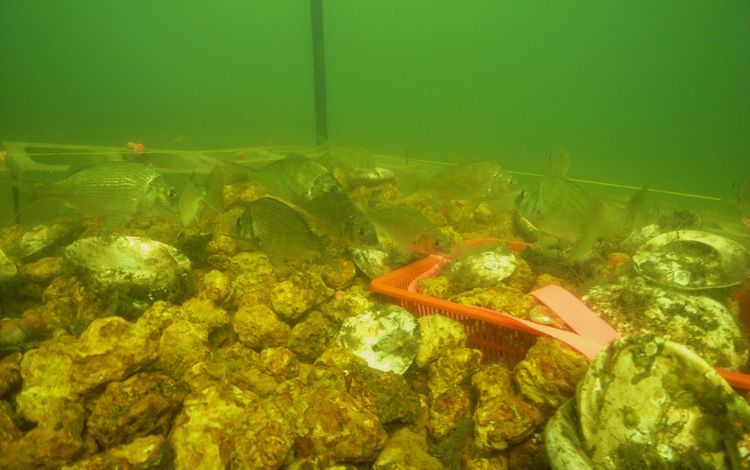
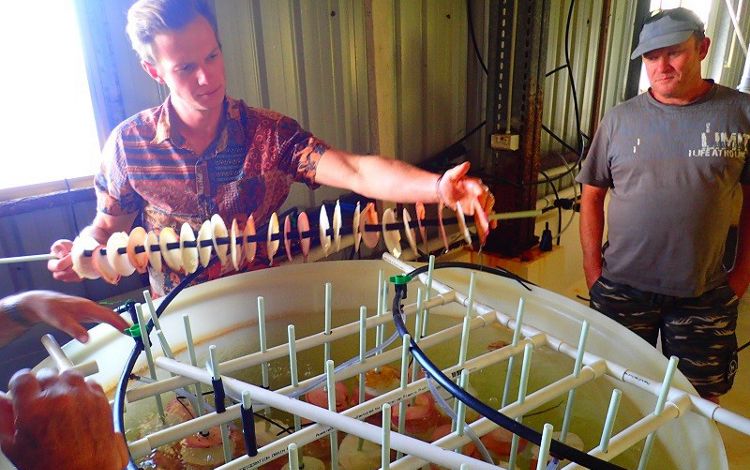
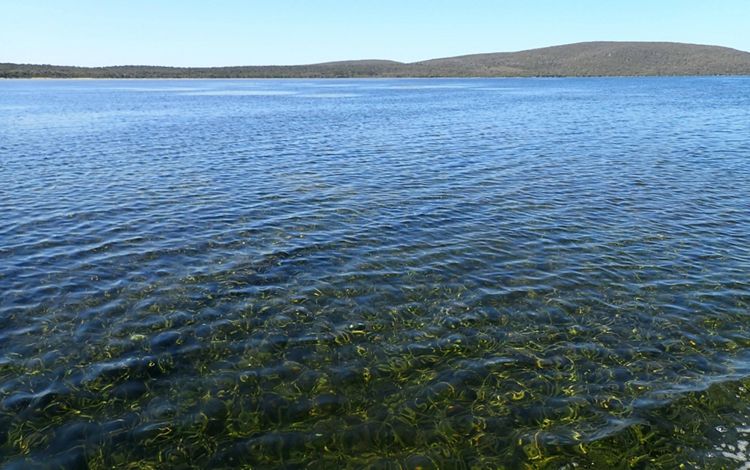
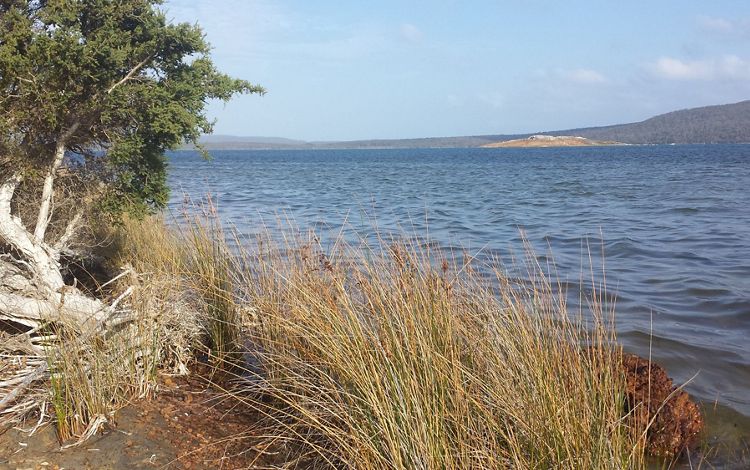
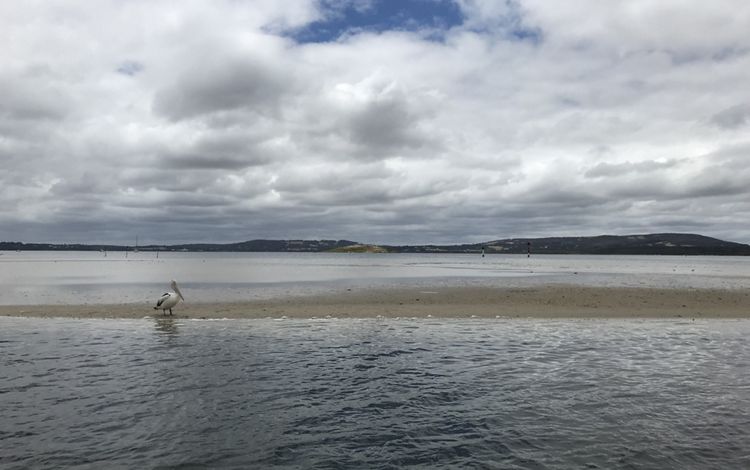

The reefs are coming back to life
The young shellfish have settled and continue to grow on the limestone, establishing themselves in their new homes and attracting all the other species that join them in creating a fully functioning shellfish reef. Months later, we're already seeing fish and other marine life at the reef.
It doesn't stop here
Whilst the monitoring frequency naturally changes as the restored reef bases become settled, the reefs are still. monitored for changes.
For more information on the achievements of the Reef Builder initiative, read the 2024 Reef Builder Final Summary Report.